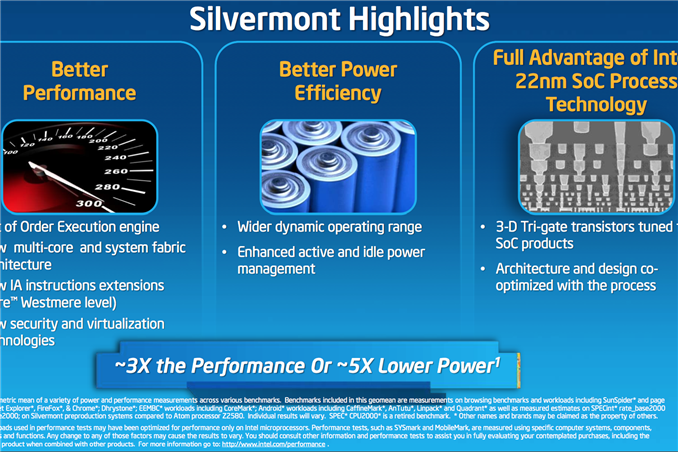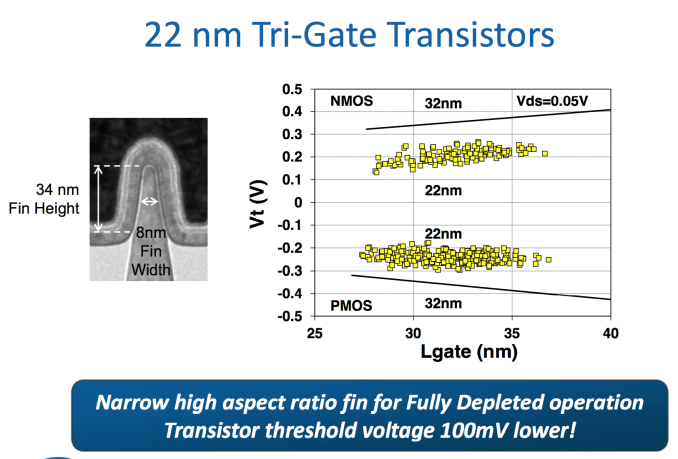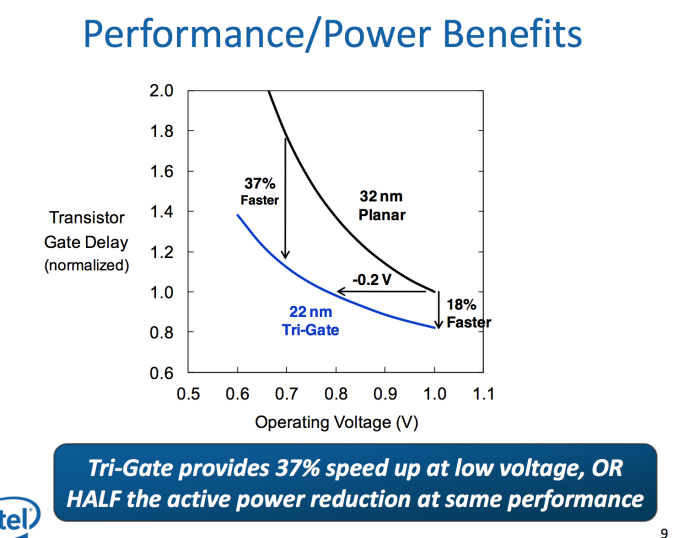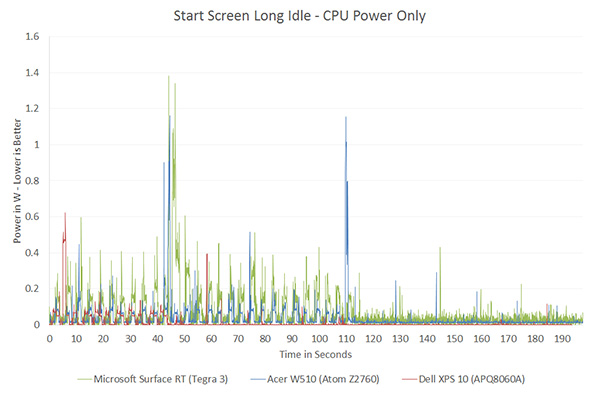Intel’s Silvermont Architecture Revealed: Getting Serious About Mobile
by Anand Lal Shimpi on May 6, 2013 1:00 PM EST- Posted in
- CPUs
- Intel
- Silvermont
- SoCs

The most frustrating part about covering Intel’s journey into mobile over the past five years is just how long it’s taken to get here. The CPU cores used in Medfield, Clover Trail and Clover Trail+ are very similar to what Intel had with the first Atom in 2008. Obviously we’re dealing with higher levels of integration and tweaks for further power consumption, but the architecture and much of the core remains unchanged. Just consider what that means. A single Bonnell core, designed in 2004, released in 2008, is already faster than ARM’s Cortex A9. Intel had this architecture for five years now and from the market’s perspective, did absolutely nothing with it. You could argue that the part wasn’t really ready until Intel had its 32nm process, so perhaps we’ve only wasted 3 years (Intel debuted its 32nm process in 2010). It’s beyond frustrating to think about just how competitive Intel would have been had it aggressively pursued this market.
Today Intel is in a different position. After acquisitions, new hires and some significant internal organizational changes, Intel seems to finally have the foundation to iterate and innovate in mobile. Although Bonnell (the first Atom core) was the beginning of Intel’s journey into mobile, it’s Silvermont - Intel’s first new Atom microarchitecture since 2008 - that finally puts Intel on the right course.
Although Silvermont can find its way into everything from cars to servers, the architecture is primarily optimized for use in smartphones and then in tablets, in that order. This is a significant departure from the previous Bonnell core that was first designed to serve the now defunct Mobile Internet Devices category that Intel put so much faith in back in the early to mid 2000s. As Intel’s first Atom architecture designed for mobile, expectations are high for Silvermont. While we’ll have to wait until the end of the year to see Silvermont in tablets (and early next year for phones), the good news for Intel is that Silvermont seems competitive right out of the gate. The even better news is that Silvermont will only be with us for a year before it gets its first update: Airmont.
 Intel made this announcement last year, but Silvermont is the beginning of Intel’s tick-tock cadence for Atom. Intel plans on revving Atom yearly for at least the next three years. Silvermont introduces a new architecture, while Airmont will take that architecture and bring it down to 14nm in 2014/2015. One year later, we’ll see another brand new architecture take the stage also on 14nm. This is a shift that Intel needed to implement years ago, but it’s still not too late.
Intel made this announcement last year, but Silvermont is the beginning of Intel’s tick-tock cadence for Atom. Intel plans on revving Atom yearly for at least the next three years. Silvermont introduces a new architecture, while Airmont will take that architecture and bring it down to 14nm in 2014/2015. One year later, we’ll see another brand new architecture take the stage also on 14nm. This is a shift that Intel needed to implement years ago, but it’s still not too late.
Before we get into an architectural analysis of Silvermont, it’s important to get some codenames in order. Bonnell was the name of the original 45nm Atom core, it was later shrunk to 32nm and called Saltwell when it arrived in smartphones and tablets last year. Silvermont is the name of the CPU core alone, but when it shows up in tablets later this year it will do so as a part of the Baytrail SoC and a part of the Merrifield SoC next year in smartphones.
22nm
To really understand the Silvermont story, you need to first understand Intel’s 22nm SoC process. Two years ago Intel announced its 22nm tri-gate 3D transistors, which would eventually ship a year later in Intel’s Ivy Bridge processors. That process wasn’t suited for ultra mobile. It was optimized for the sort of high performance silicon that was deployed on it, but not the ultra compact, very affordable, low power silicon necessary in smartphones and tablets. A derivative of that process would be needed for mobile. Intel now makes two versions of all of its processes, one optimized for its high performance CPUs and one for low power SoCs. P1270 was the 22nm CPU process, and P1271 is the low power SoC version. Silvermont uses P1271. The high level characteristics are the same however. Intel’s 22nm process moves to tri-gate non-planar transistors that can significantly increase transistor performance and/or decrease power.
This part is huge. The move to 22nm 3D transistors lets Intel drop threshold voltage by approximately 100mV at the same leakage level. Remember that power scales with the square of voltage, so a 100mV savings depending on what voltage you’re talking about can be very huge. Intel’s numbers put the power savings at anywhere from 25 - 35% at threshold voltage. The gains don’t stop there either. At 1V, Intel’s 22nm process gives it an 18% improvement in transistor performance or at the same performance Intel can run the transistors at 0.8V - a 20% power savings. The benefits are even more pronounced at lower voltages: 37% faster performance at 0.7V or less than half the active power at the same performance.
The end result here is Intel can scale frequency and/or add more active logic without drawing any more power than it did at 32nm. This helps at the top end with performance, but the vast majority of the time mobile devices are operating at very lower performance and power levels. Where performance doesn’t matter as much, Intel’s 22nm process gives it an insane advantage.
If we look back at our first x86 vs. ARM performance data we get a good indication of where Intel’s 32nm process had issues and where we should see tangible improvements with the move to 22nm:
Qualcomm’s 28nm Krait 200 was actually able to get down to lower power levels than Intel could at 32nm. Without having specific data I can’t say for certain, but it’s extremely likely that with Silvermont Intel will be able to drive down to far lower power levels than anything we’ve ever measured.
Understanding what Intel’s 22nm process gives it is really key to understanding Silvermont.













174 Comments
View All Comments
Amoro - Monday, May 6, 2013 - link
In the first sentence of the paragraph below the Saltwell Vs. Silvermont graph, it states "In terms of absolute performance, Saltwell’s peak single threaded performance is 2x that of Saltwell" and it should be "Silvermont's peak single...."ClockworkPirate - Monday, May 6, 2013 - link
Also at the end of the first paragraph on the "Tablet Expectations and Performance" page, "...with Haswell picking up above Haswell." should probably be "...with Haswell picking up above Bay Trail."chrone - Monday, May 6, 2013 - link
this is the soc i've been waiting for since 2008. winter is coming!! it's gonna be a long winter for arm and friends ahead. \m/theos83 - Monday, May 6, 2013 - link
lol...wait and watch...it has been a long winter for intel (from a mobile market point of view), lets see what they end up with in the next 4 years...ARM and friends are not going away anytime soon.Hector2 - Friday, May 17, 2013 - link
True. The difference between then and now is that Intel didn't have an SoC designed and optimized for smartphones. Now they do (this year) and it'll be about 22nm & 14nm offering Intel higher performance, lower power and lower cost. In this area Intel has about a 2 year lead on their competitionKrysto - Monday, May 6, 2013 - link
It's very, very, VERY hard to beat a monopoly in a certain market (ARM that is), even with a company like Intel that may have a monopoly in another.Plus they have like a dozen competitors there, with at least 3-4 top ones. Intel has promised a lot of stuff before, and under-delivered. So we'll see. ARM chips are also going 20nm and 64 bit next year, and at 14nm FinFET the year after that (yes, only a year later).
Plus, if these things cost 2-3x what the high-end ARM chips cost, they can just pack and go home. No OEM will accept that, unless Intel gives them Haswell in PC's for 30% off, or some deal like that (which would mean they won't be making any money on these Atoms anytime soon).
klmccaughey - Tuesday, May 7, 2013 - link
Intel has the cash to loss-lead on this and open a big crack into the market. It also has the bucks to advertise.My guess is that shareholders are screaming for Intel to get into this market. All the omens look good and I am really looking forward to a big jump in power and battery life for mobiles. I think ARM finally has a real competitor.
HisDivineOrder - Tuesday, May 7, 2013 - link
Intel (and MS) are still under the delusion they're in the 1990's where they could be a premium vendor. Look at all the Windows tablets for proof of this. Intel and MS are both charging way more than they should and all their Wintel tablets (RT or 8) are overpriced by a huge amount.Intel doesn't loss lead. At least, they haven't shown any sign of it at all. Maybe this will be their moment, but somehow... I really, really doubt it.
zeo - Wednesday, May 8, 2013 - link
Don't confuse Intel with the OEMs and MS, Intel isn't over charging on their hardware!The listed Tray cost for the Clover Trail Z2760 SoC is only $41, at a time when ARM high end SoCs are starting to go over $30... So there's not a multiple times cost difference anymore.
OEMs just mistakenly took their cue from MS pricing of the Surface and it's not like the tablet market is really set up for PC configurations.
OEMs for example are used to using internal drive capacity as a way of charging more of their products. Like it doesn't cost anywhere near $50 to double the drive capacity of a Nexus 7 for example or how Apple charges a $100 for each doubling of capacity.
Remember, Windows tablets start with 32GB and that's much higher minimum than what mobile devices still offer.
Along with inclusion of full size USB ports, the added cost of Windows license, the greater tendency to include premium parts like WACOM digitizers, etc all added together for how the pricing finally came out...
However, the OEMs should have learned their lessons, MS is definitely going to offer them better volume license fees this time around, and Bay Trail is suppose to be even lower priced than Clover Trail... So we should see much better pricing with this new generation of products.
BSMonitor - Wednesday, May 8, 2013 - link
Its not a monopoly. There are several companies that build ARM SoC's. ARM is an ISA, no different than x86. If Intel delivers quantity, better performaning SoC's than the competitors, best believe they will switch. Apple already does x86 in house on OS X. Promise you they have been testing Atom in house for potential future designs.. Whether those designs win over ARM A# in house designs is another matter... Intel is nothing if not good at getting companies to sign up with them.. They deliver the highest quality and highest quantities of anyone in the silicon business.